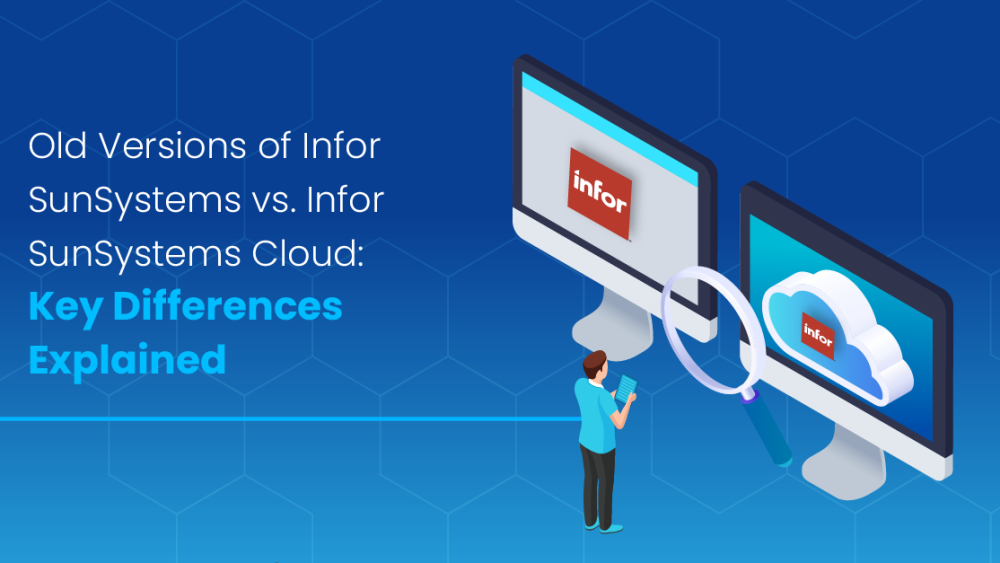SunSystems has come a long way since its origins as Sun Accounts in 1980.
Over the decades, the software has continuously evolved—adding web access, analytical capabilities, and modern UI enhancements.
But with the release of SunSystems Cloud in 2022, the system took a transformative leap, moving from traditional software to a modern, scalable cloud-based solution.
So, how does the cloud version compare to the legacy ones?
From On-Premise Evolution to the Cloud Revolution
Older versions of SunSystems—such as 4.2.6 (1999), 5.4 (2009), and 6.1.1 (2011)—brought incremental improvements like GUI interfaces, support for relational databases, and early web access.
By 2014, version 6.2.1 introduced enhanced analysis capabilities, and 6.4 in 2019 embraced intercompany posting and web-first design.
However, these versions still relied heavily on on-premise or hosted infrastructure.
SunSystems Cloud builds on this rich legacy but delivers a completely new experience:
-
No local servers or manual upgrades: The cloud version removes the need for costly on-premise infrastructure, eliminating the time and risk associated with system maintenance and version upgrades.
-
Automatic updates: You’ll always be on the latest version of SunSystems with regular patches and bug fixes applied in the background—no more relying on your in-house team or Implementation Partner for upgrades.
-
Access to three servers: Enjoy a development, test, and live environment that ensures system changes or future development won’t impact your live financial operations.
-
24/7 cloud maintenance and support: Your system is supported around the clock by expert teams, giving you peace of mind with continuous security, performance, and immediate assistance when needed.
-
All SunSystems modules included in one subscription: Unlike older versions that required additional costs for extra modules, SunSystems Cloud offers an all-inclusive pricing model—giving you full access to every module without surprise charges.
-
Always up to date: Legacy systems required scheduled updates, often incurring downtime. The cloud version ensures automatic updates with minimal disruption, so users always have access to the latest features.
Enhanced Features in SunSystems Cloud
- Full web enablement for Transfer Desk.
- The security console is also now fully web-enabled.
- New scheduling engine used by Reports and Transfer Desk Automation Profiles. It also provides upgrade tools for older SunSystems versions to the cloud.
- A new queueing technology has been added to SunSystems Cloud to enable reporting at scale.
- New cloud storage facilities that enable a more robust file and folder management with permissions and are backed by S3.
- Restructure of system configuration options (CGM)
- New Banking Payment History and API
- Bank record-related workflow enhancements
- New API access to SunSystems data (via the ION API gateway)
- Improved scalability and performance across global teams
- API-rich environment for seamless integration with other tools
- Built-in multi-factor authentication (MFA) and single sign-on (SSO)
- Real-time data access and reporting over the web
Why It Matters
SunSystems Cloud isn’t just the next version—it’s a strategic shift.
Organisations upgrading from older versions benefit from improved flexibility, lower IT overhead, and future-ready functionality that keeps pace with evolving financial requirements.
Thinking about upgrading?
Whether you’re running an older version like 5.4 or even 6.4, moving to SunSystems Cloud can modernise your finance function and provide long-term ROI.
Talk to our team for a migration assessment.


